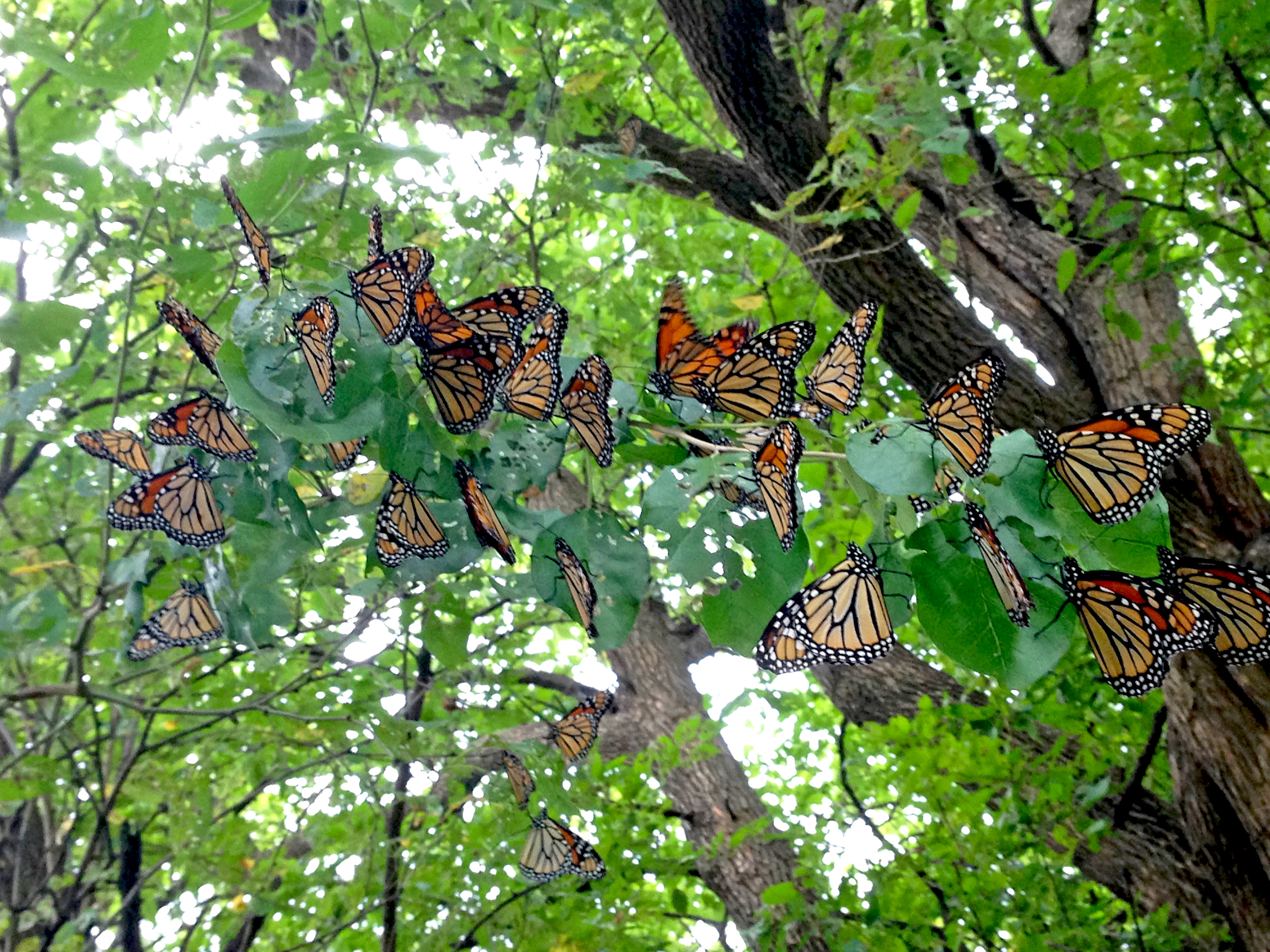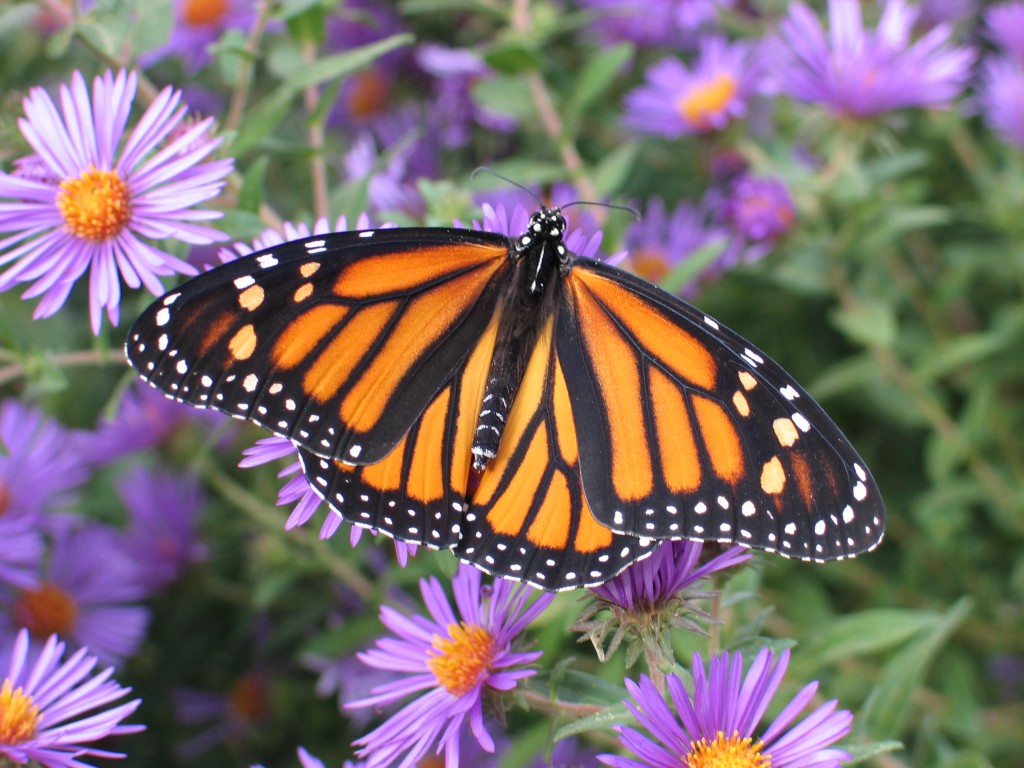Last week (late September) the Monarchs began to congregate in the arboretum. There are hundreds of them hanging from the branches in the hedgerow of our amphitheater. They are pooling here until the next north wind can help push them south.
In the last few years, we have only seen a handful in the arboretum during their annual migration. When I first started working here many years ago, they would cover the trees, turning them orange and black. We have certainly seen the decline of the population since then, but I am hoping the Monarchs hanging from the trees today signal a turn-around of the decrease encountered since the 1990s.
It is a wonderful and exciting sight to see so many of them. I could spend hours watching the Monarchs. They are mesmerizing, thought-provoking and captivating all at the same time. Here are three reason why they intrigue me so much.
1. They are delicate but strong.
How can something so beautiful and fragile make the nearly 2000 mile journey from Canada to central-Mexico? Every autumn, millions of monarch butterflies survive this incredible journey. From start to finish it takes them two months to make the trip. These delicate monarch butterflies are a marvel of nature. We admire their beauty and endurance. If you really think about it, the migration is one the most amazing in the natural world.
2. They love milkweeds and find them in the landscape.
I have heard that Monarchs can smell milkweeds from over two miles away. It may be from even further away if the milkweed population is large. Wow, do they have good senses, but their survival depends on them finding milkweeds.
Monarchs use receptors on their antennae to “smell” the milkweeds in your landscape. As they get closer to the plants, sight takes over to land on the actual plant. They make the final assessment of the plants with receptors on their feet. So more milkweeds in your landscape will only increase the odds of attracting Monarchs to your garden.
3. They use the winds to aid their migration.
As they have been resting and waiting at the arboretum this week, the Monarchs have been feasting on the wildflowers in bloom such as asters, goldenrods, and sunflowers. I anticipate their departure as soon as the next north wind comes sweeping down the plains.
They use the updrafts called “thermals” and prevailing winds to their advantage, much like migrating birds, to preserve energy. Their flapping wings can propel them southward at speeds ranging between 10 to 25 miles an hour. Monarchs can travel 50-100 miles per day to complete the two months journey. There will be time to rest when they finally make it to the warm Central Mexican Oyamel fir forests in the Michoacan hills.
The annual Monarch migration is a magical event. These winged wonders captivate my/our attention every year. How can something so small go so far? It is truly extraordinary how they flutter all the way south. They are worth saving. Join me in planting milkweeds and establishing the habitat sanctuaries they need. We can all be part of the solution.



